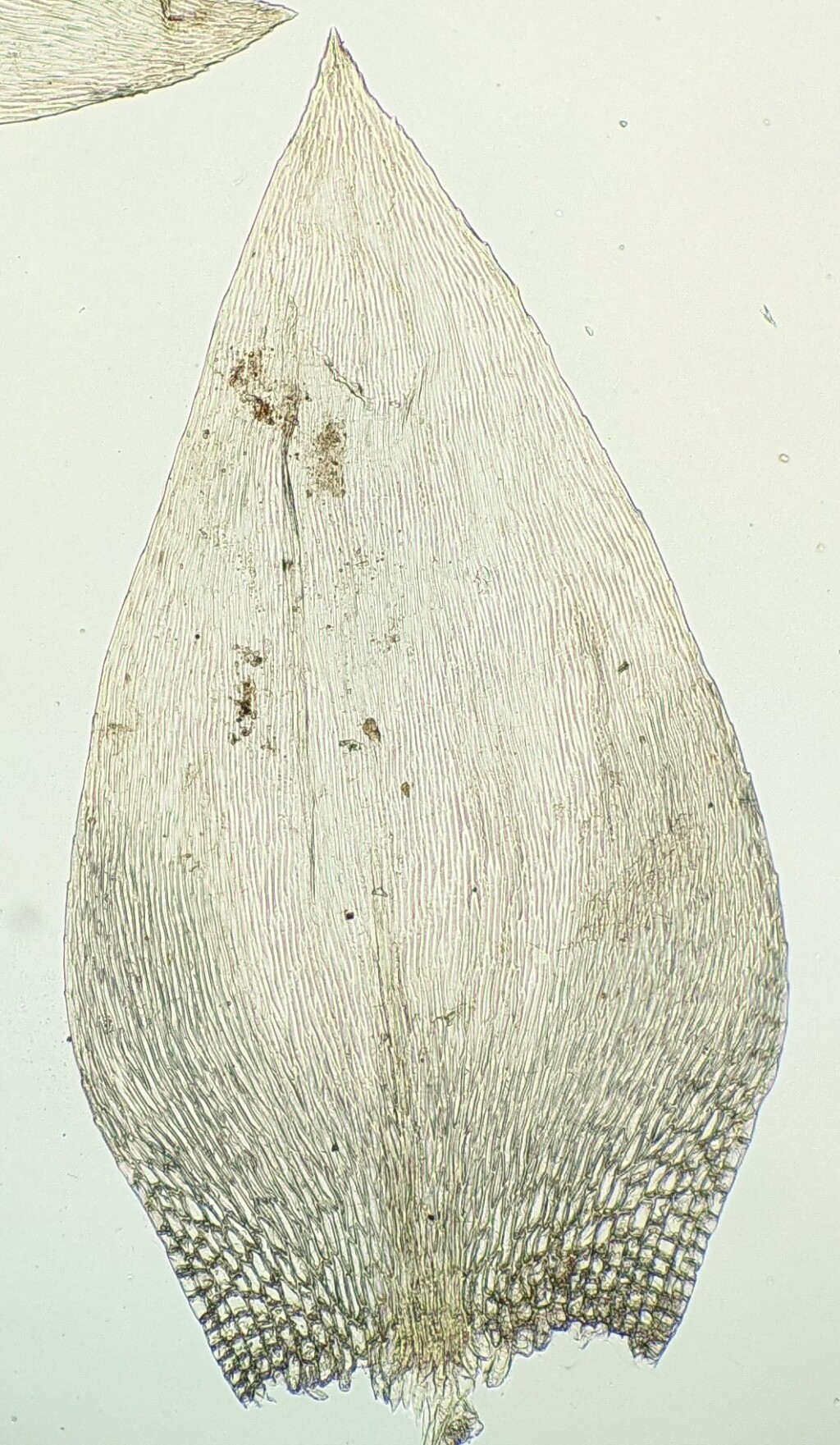Entodon
Autoicous or rarely dioicous (not in Victoria). Asexual propagules absent. Mats on rocks, soil, logs or trees. Stems creeping or ascending (not in Victoria), irregularly or subpinnately to bipinnately branched, with relatively short branches, with rhizoids clustered on ventral surface; central strand present. Leaves oblong-lanceolate to oblong-ovate, arranged around stem and facing all directions or complanate, those of stem similar to those of branches or sometimes slightly differentiated by shape and alar cell extent, erect to erect-spreading when moist, scarcely altered to becoming more appressed when dry, not plicate, not decurrent; apex obtuse (not in Victoria), acute or acuminate; costa double and short to extending to near midleaf (not in Victoria), or absent (not in Victoria); margin entire (not in Victoria) or serrulate toward apex, plane or reflexed near base (not in Victoria); laminal cells linear, becoming shorter near base, smooth; alar cells well-differentiated, numerous, sometimes extending to costa, quadrate to subquadrate, sometimes inflated, forming triangular or auriculate groups. Capsule erect or nearly so, symmetric, cylindric, with (not in Victoria) or without an annulus. Calyptra cucullate, smooth, glabrous. Operculum conic (not in Victoria) to obliquely rostrate. Peristome double; exostome teeth yellow (not in Victoria) to brown or red-brown, without a prostome; endostome with segments as long or shorter than exostome, rarely rudimentary (not in Victoria), with a low basal membrane; cilia absent or rarely rudimentary (not in Victoria).
Around 117 species in temperate to tropical regions, but most diverse in East Asia and in the Andes; one species in Victoria.
 Spinning
Spinning

